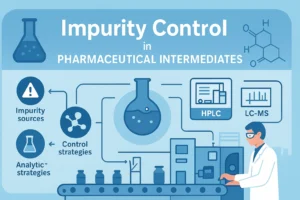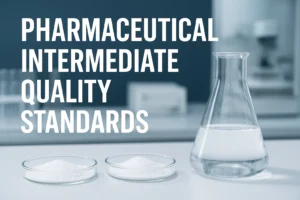These traits make it a favorite for reactions requiring precise control, such as esterifications and catalytic couplings.
Where You’ll Find It in Action
1、Pharmaceutical Manufacturing
In drug development, 2-methylpentanoic acid plays several critical roles:
– **Antibiotic side chains**: Used to synthesize cephalosporin derivatives with improved bioavailability
– **Prodrug synthesis**: Modifies antiviral agents to enhance cellular uptake
– **Chiral building blocks**: Serves as a precursor for enantiomerically pure compounds (e.g., via enzymatic resolution)
A 2023 study in *Organic Process Research & Development* highlighted its use in streamlining the synthesis of a late-stage HIV protease inhibitor, cutting production steps by 30%.
2、Industrial Applications
Beyond pharma, this intermediate shines in:
– **Lubricant additives**: Forms esters with neopentyl glycol for high-temperature stability
– **Flavor compounds**: Key raw material for isoamyl acetate (think banana and pear fragrances)
– **Polymer modifiers**: Acts as a plasticizer in PVC formulations to prevent brittleness
How It’s Made: Balancing Cost and Quality
While synthesis routes vary, most commercial production uses one of three methods:
Method 1: Oxidation of 2-Methyl-1-Pentanol
– Process: React with potassium permanganate (KMnO₄) in acidic conditions
– Yield: ~75-80%
– Trade-offs: Affordable but generates manganese dioxide waste
Method 2: Hydrocarboxylation
– Process: Catalytic insertion of CO into 3-methyl-1-pentene using rhodium complexes
– Yield: Up to 85%
– Trade-offs: Higher purity but requires pressure reactors
Method 3: Fermentation
– Process: Engineered *E. coli* strains convert glucose via β-oxidation pathways
– Yield: Over 90% in lab settings
– Trade-offs: Eco-friendly but slower to scale
Quality Red Flags Every Buyer Should Spot
Not all 2-methylpentanoic acid is created equal. Here’s what separates GMP-grade material from commodity stock:
Parameter | Acceptable Range | Test Method |
Purity | ≥99.0% | GC-FID |
Water Content | <0.2% | Karl Fischer |
Color | ≤20 APHA | Platinum-Cobalt Scale |
Isomer Impurities | <0.5% total | HPLC-UV |
Watch out for suppliers who skip these critical tests—impurities as low as 1% can derail sensitive reactions.
The Market Shift You Can’t Ignore
Three trends are reshaping demand:
- **Green Chemistry Push**: Buyers increasingly prefer bio-based routes (12% CAGR growth projected through 2030)
- **Pharma Boom**: GMP-grade demand up 22% YoY due to antibiotic API projects
- **Regional Hotspots**: Asia-Pacific now consumes 60% of global production, driven by polymer and fragrance industries
5 Questions to Ask Your Supplier
Before placing an order, clarify these points:
- **“Can you provide batch-specific impurity profiles?”** (Avoid one-size-fits-all COAs)
- **“What’s your lead time for 500kg+ orders?”** (Supply chain delays are rampant)
- **“Do you offer custom derivatization?”** (Esterification services save time)
- **“Is your material REACH/OSHA compliant?”** (Critical for EU/US exports)
- **“What’s your MOQ for trial batches?”** (Test before full commitment)
Why We’re the Partner You’ve Been Searching For
– **Scale flexibility**: From R&D samples (100g) to full metric-ton batches
– **Documentation ready**: DMFs, ASMFs, and CEPs available upon request
– **Sustainability commitment**: 92% solvent recovery rate via closed-loop systems
Ready to discuss your needs? Get in touch for samples or technical specs.
Key Takeaways:
– Versatile intermediate with pharma and industrial applications
– Quality hinges on purity (>99%) and isomer control
– Market leaning toward sustainable production methods
– Supplier due diligence prevents costly production issues
⚠️ Critical Usage Restriction:
This 2-methylpentanoic acid (CAS 97-61-0) is supplied exclusively as synthetic intermediate under strict regulatory oversight.
Key compliance requirements:
Absolute Prohibition:Never for direct human/animal use;Banned in cosmetics, food additives, or medical applications




